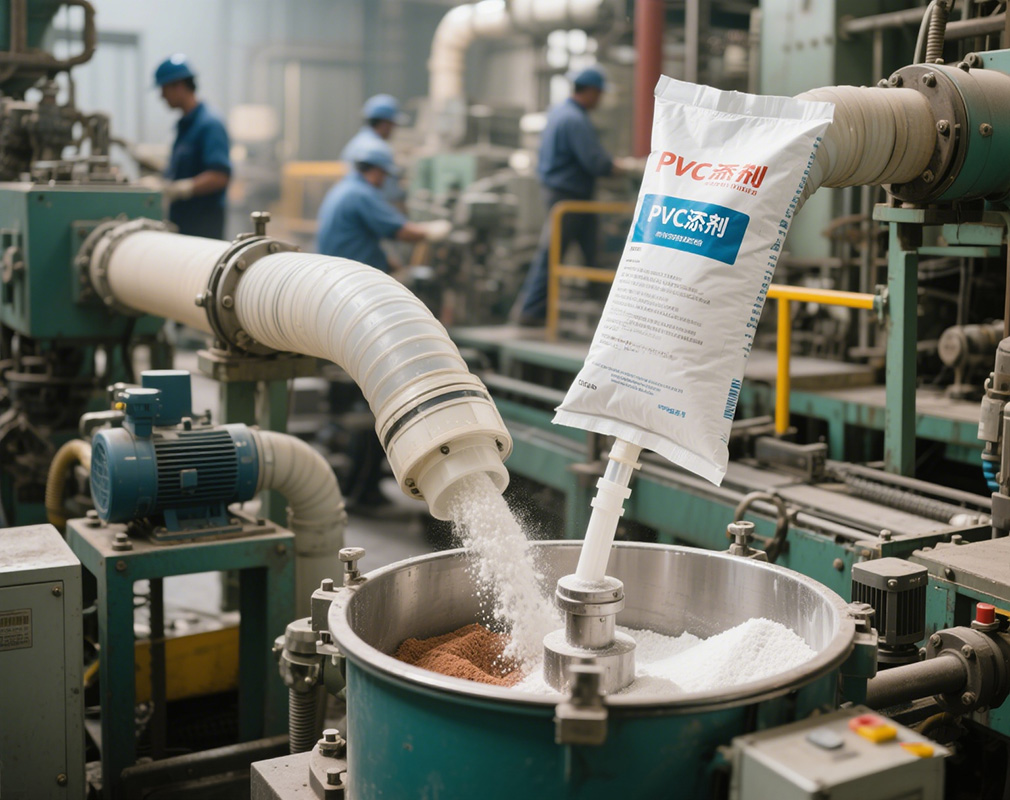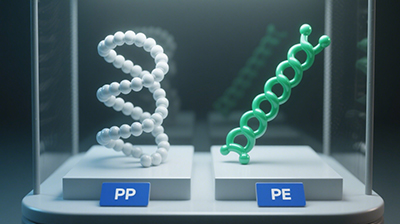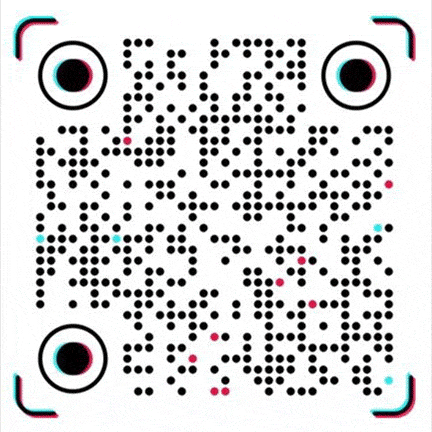Effect of heat stabilizer on PVC properties
Inherent defects of PVC and the necessity of additive modification
Polyvinyl chloride (PVC) is the world's second largest general-purpose plastic. The presence of allyl chloride groups and branched structures in its molecular chain structure leads to its extremely poor thermal stability. It only needs to be heated to above 100°C to start removing hydrogen chloride (HCl), triggering a chain degradation reaction, accompanied by a deepening of color (yellow→red→brown→black) and a sharp drop in mechanical properties.
At the same time, the melt viscosity of PVC resin is as high as 10³-10⁴ Pa・s (much higher than 10² Pa・s of polyethylene), and it is easy to aggravate degradation due to frictional heat during melt processing.
Therefore, unmodified PVC can hardly be used directly, and it must be synergistically added with a variety of additives such as heat stabilizers, plasticizers, lubricants, fillers, flame retardants, etc. to meet the performance requirements of different scenarios.
Taking pipe-grade PVC as an example, the proportion of additives in its formula can reach 20%-30%, among which heat stabilizers are the core additives, which directly determine the processing feasibility and service life of PVC products. The following is an analysis of the mechanism, type and application of heat stabilizers, and the synergistic effects of other additives are discussed.
Mechanism and key performance indicators of heat stabilizers
The core function of heat stabilizers is to inhibit the thermal oxidation degradation of PVC during processing (160-200℃) and long-term use. Its action pathways include:
Neutralization of HCl: Capture HCl produced by degradation to prevent it from catalyzing dechlorination reactions (such as metal soaps and HCl to generate stable metal chlorides);
Replacement of allyl chloride: Replace active chlorine atoms on the molecular chain with stable groups (such as fatty acid radicals of zinc soaps) to block the starting point of degradation;
Antioxidation and free radical capture: For example, the thiol group in organic tin removes peroxide free radicals and inhibits oxidative chain scission;
Adsorption of conjugated double bonds: Adsorption of conjugated polyene structures through metal oxides (such as CaO) to delay color deepening.
Case: When producing PVC cling film, methyltin heat stabilizer (such as TM-181-FS) must be used because it has excellent transparency (light transmittance > 90%), non-toxicity (FDA certified) and long-term thermal stability (processing window as wide as 30℃), while traditional lead salts are strictly prohibited due to migration and contamination of food.
Selection logic and synergistic effect of heat stabilizer
(I) Technical requirements orientation
Processing temperature matching:
Soft PVC (such as film, processing temperature 140-160℃) can use Ca/Zn composite stabilizer;
Hard PVC (such as pipes, processing temperature 180-200℃) requires organic tin or lead salt (need to be combined with lubricants to reduce melt viscosity).
Weather resistance requirements:
Outdoor products (such as door and window profiles) need to add barium/cadmium/zinc composite stabilizers + UV absorbers, and use metal soaps to stabilize chlorine atoms and UV absorbers to capture UV energy (absorption peak 290-350nm), and the dual mechanism delays aging.
(II) Regulations and environmental restrictions
EU RoHS Directive: prohibits the use of heavy metal stabilizers such as lead and cadmium in the field of electronic appliances, and promotes lead-free (such as replacing with Mg/Zn composite stabilizers);
China GB 9685 standard: PVC for food contact must use octyltin and calcium-zinc composite stabilizers, and the heavy metal migration amount is ≤1ppm.
(III) Balance between cost and performance
Lead salt stabilizers (such as tribasic lead sulfate) cost only 1/3 of organic tin, but due to toxicity restrictions, the market share has dropped from 60% in 2010 to 35% in 2023;
Calcium zinc stabilizers can improve the initial colorability from level 3 (yellowing) to level 1 (nearly colorless) by compounding polyols (such as pentaerythritol) and β-diketones. The cost is 50% lower than that of organic tin, making it the mainstream choice in the pipe field.
Synergistic effect case: In the PVC-U water supply pipe formula, compounding 3 parts of calcium zinc stabilizer + 0.5 parts of calcium stearate (lubricant) + 1 part of epoxy soybean oil (auxiliary stabilizer) can extend the heat stabilization time from 12 minutes of single calcium zinc to 22 minutes, and at the same time increase the melt flow rate (MFR) from 0.8g/10min to 1.2g/10min, improving processing fluidity.
Interaction between other additives and heat stabilizers
(I) Plasticizer: Changes intermolecular forces
Dioctyl phthalate (DOP): When added at 30-50%, PVC changes from hard to soft, but DOP will extract metal components (such as Zn²+) in the stabilizer, resulting in a decrease in stabilization efficiency. Solution: Increase the amount of stabilizer by 10-15%, or use ** high molecular weight plasticizers (such as polyester plasticizers) to reduce migration.
Epoxy plasticizers (such as epoxy fatty acid methyl ester): have both plasticizing and auxiliary stabilization functions, and their epoxy groups can absorb HCl, forming a "main and auxiliary synergy" with calcium zinc stabilizers, reducing the amount of main stabilizers by 20%.
(II) Lubricant: Regulates processing rheological properties
Internal lubricant (glyceryl stearate): Reduces intermolecular friction and promotes plasticization, but excessive amounts will lead to uneven dispersion of stabilizers, and should be controlled at 0.5-1 parts;
External lubricant (paraffin): Reduces friction between melt and equipment and prevents mold sticking, but forms a lubricating film on the PVC surface, hindering the migration of stabilizers to the degradation area, and should be used in a balanced ratio of 2:1 with the internal lubricant.
(III) Filler: Affects the effective concentration of stabilizers
Calcium carbonate (CaCO₃): When the addition amount exceeds 10 parts, its surface hydroxyl groups will adsorb metal ions in the stabilizer (such as competitive adsorption of Ca²+ and Zn²+), resulting in a decrease in stabilization efficiency. Solution: Use stearic acid to modify CaCO₃, coat the filler surface to reduce adsorption, and enhance compatibility with the PVC matrix.
Emerging heat stabilizer technology and industry trends
Non-metallization trend:
Organic amine stabilizers: such as dimethylethanolamine, which reacts with HCl to form salts through amino groups, are suitable for transparent products, but have poor volatility resistance (volatilization loss rate > 15%) and need to be used in conjunction with hindered amine light stabilizers (HALS);
Ionic liquid stabilizers: such as 1-butyl-3-methylimidazolium chloride, whose liquid properties make it extremely compatible with PVC and has a thermal stability time of 35 minutes (200°C), but its cost is as high as US$50/kg, limiting its large-scale application.
Development of bio-based stabilizers:
Natural antioxidants such as tea polyphenols and phytic acid extracted from plants can extend the UV aging life of PVC to 500 hours (equivalent to 2 years of outdoor exposure) when combined with zinc soap, and the biodegradability rate reaches 60%, which is suitable for disposable products such as agricultural mulch.
Intelligent synergistic system:
The interaction energy between stabilizers and PVC chains is predicted through molecular simulation technology (such as density functional theory DFT) to design efficient molecular structures.
For example, Catinol ZB-21 zinc soap developed by BASF in Germany increases the binding energy with PVC from -80kJ/mol to -120kJ/mol by introducing branched fatty acid groups, and the stabilization efficiency is increased by 50%.
System engineering thinking of additive system
The performance optimization of PVC is essentially a system engineering of synergistic effects of multiple additives: heat stabilizers solve the problem of "whether it can be processed", plasticizers determine "hardness and use", lubricants regulate "processing efficiency and appearance", fillers affect "cost and mechanical properties", and flame retardants, impact modifiers, etc. further give specific functions.
In the future, with the tightening of environmental protection regulations and the demand for circular economy, heavy metal-free, bio-based, and high synergistic efficiency additive systems will become the mainstream of the industry, promoting the transformation of PVC from "high-pollution plastics" to "sustainable materials".
Our platform connects hundreds of verified Chinese chemical suppliers with buyers worldwide, promoting transparent transactions, better business opportunities, and high-value partnerships. Whether you are looking for bulk commodities, specialty chemicals, or customized procurement services, TDD-Global is trustworthy to be your fist choice.















